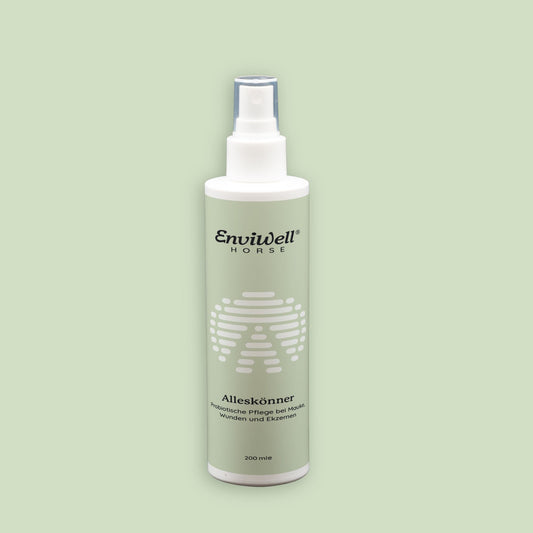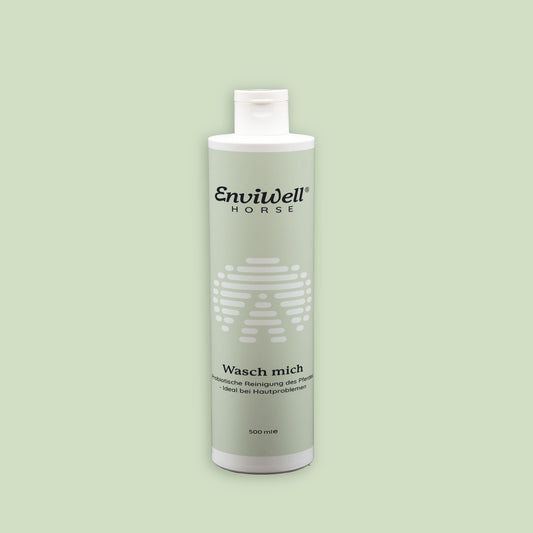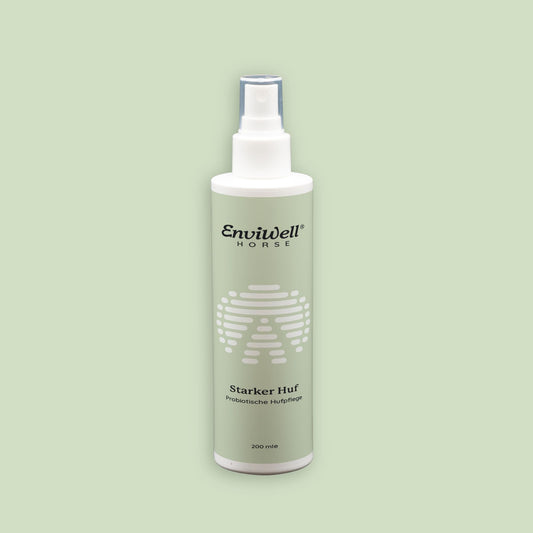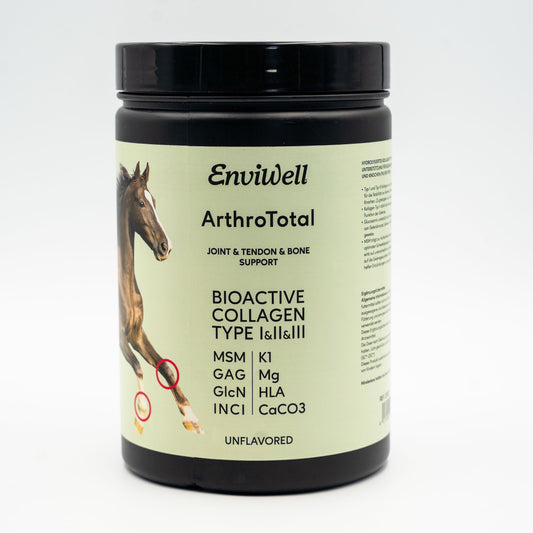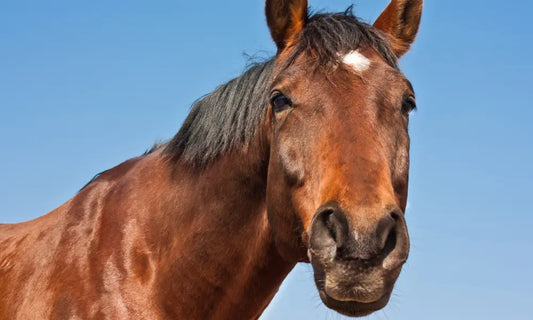
ADMR-compliant horse feed: What you should know about doping rules in equestrian sports
Alexander DurbanDoping isn't just a sensitive issue in elite human sports – equestrian sports are also subject to strict regulations. Anyone wishing to participate in competitions with their horse must ensure that all feed, supplements, and medications used comply with the Anti-Doping and Medication Control Rules (ADMR). This article explains exactly what ADMR compliance means, which regulations apply, and how to avoid violations.
What does ADMR-compliant actually mean?
The ADMR – short for “Anti-Doping and Medication Control Rules” – are the rulebook of the German Equestrian Federation (FN) designed to ensure that horses are not influenced by performance-enhancing or harmful substances during competition.
"ADMR-compliant" means that all products used – from feed to medication – must comply with these regulations. The goal is fair competition and the health of horses. Violations are considered administrative offenses and can have serious consequences.
ADMR-compliant care for your horse
Our horse care and feed supplements are designed according to the principles of ADMR compliance to guarantee your maximum safety. They contain no doping-relevant ingredients or substances requiring a withdrawal period. This allows you to focus on maintaining and caring for your horse without having to worry about an unpleasant surprise at the next competition.

What requirements apply to ADMR-compliant behavior?
In everyday practice, ADMR-compliant behavior means that you, as a rider, horse owner, or trainer:
- You do not use any prohibited substances or methods to enhance performance,
- You regularly inform yourself about the current ADMR list,
- only uses tested products, especially for animal feed and supplements,
- and document all medications used, so that you can prove what was administered if necessary.
The ADMR apply to all horses competing in tournaments, but are also relevant for recreational riding as soon as performances are required or delivered that are related to competition.

How do the anti-doping and medication control rules work?
The ADMRs define specifically which substances are prohibited and how violations are punished. A distinction is made between... permitted medications with a withdrawal period , permitted use (e.g. for medical emergencies) and Absolutely forbidden substances distinguished.
What types of tests are being conducted?
- Event-related checks : At tournaments, horses can be tested randomly or in a targeted manner.
- Tests independent of suspicion : The FN can also have checks carried out during training or courses.
- Blood and urine samples These are the most common testing methods.
These measures are intended to ensure that all horses compete under the same conditions.
Which substances are considered doping agents in equestrian sports?
Doping agents are substances that affect a horse's performance or suppress pain, making the animal appear more resilient than it actually is. These include, among others:
- Anesthetics and painkillers like phenylbutazone
- Anti-inflammatories and cortisone preparations
- Hormone preparations (e.g. testosterone or growth hormones)
- Stimulants such as caffeine or theobromine
These substances are either completely banned or only permitted if specific waiting periods are observed.
What are the dangers?
- Pain relief masks injuries → increased risk of injury
- Interventions in the hormonal balance → long-term health damage
- Damage to internal organs caused by toxic substances
The use of such substances is also highly problematic from an animal welfare perspective.

How do you choose ADMR-compliant horse feed?
Many doping violations occur unintentionally due to contaminated or inadequately declared feed. Therefore, particular care must be taken when choosing feed and supplements.
How can you recognize ADMR-compliant food?
- Labeling : Look for indications such as "ADMR compliant" or "doping-relevant ingredients: none" on the packaging.
- Carefully check the composition : Caution is particularly advised with herbal mixtures (e.g., containing devil's claw, willow bark, or ginger). These may contain doping-relevant substances.
If in doubt, you should use a certified product or consult your veterinarian or the manufacturer.
Waiting periods: This is how long you have to stop taking your medication before the tournament.
Withdrawal periods are defined timeframes after which an authorized substance no longer exhibits or can be detected as having a performance-impairing effect. They are crucial for ADMR compliance.
How long are typical waiting periods?
| Active ingredient / product | Waiting period according to ADMR | |
|---|---|---|
| Phenylbutazone | 7 days | |
| Dexamethasone (cortisone) | 3 days | |
| Theobromine (e.g., cocoa) | 48 hours | |
| Devil's Claw | 96 hours | |
| MSM (Methylsulfonylmethane) | no waiting period¹ |
¹ Unless other active ingredients are included.
Important: The actual withdrawal period can be extended due to combinations of factors or individual metabolic differences. When in doubt, it's better to wait longer.
Ignorance of the law is no excuse: Liability and consequences for ADMR violations
In German equestrian sport, an irrefutable principle applies: the responsibility for the horse lies at all times with the "responsible person." In plain terms, this means that in the event of doping, strict liability applies.
Regardless of whether a prohibited substance was intentionally administered to enhance performance or entered the horse completely accidentally – for example, through contaminated feed – the rider, owner, or person in charge will be held accountable. It makes no difference whether you administered the substance yourself or not.
The consequences of violating the Anti-Doping and Medication Control Rules (ADMR) can be drastic. Sanctions range from the immediate disqualification of the horse and the forfeiture of any achievements , to substantial fines that can quickly reach several thousand euros, and even long-term competition bans for both horse and rider.
Securing your insurance is a matter of due diligence: Here's how to minimize the risk
Because liability is handled so strictly, proactive prevention is the only effective protection against unpleasant surprises. It's about being able to prove your duty of care at any time.
The most important element is complete documentation . Keep a meticulous record of every feeding, every medication, and every grooming product used. If you have any questions about preparations, new supplements, or are unsure about the ingredients, consulting your veterinarian is essential.
The safest way to avoid contamination is to consistently use certified products that have been analyzed in accordance with ADMR regulations . Look for the relevant seals and manufacturer's guarantees. As an additional safeguard, it is advisable to keep reserve samples of feed and medication batches (e.g., frozen). In a worst-case scenario, these samples can be used for counter-analysis and exonerate you.
In the context of the ADMR, prevention is not only the best protection – it is the only reliable strategy to keep the sport fair and clean and to protect your own career.

What should you remember?
Acting in accordance with ADMR regulations means taking responsibility for your horse's welfare and fair play in the sport. You should not use any products whose ingredients you don't know – and it's always better to check too often than not enough.
Remember:
- Find out more before the use of a product.
- Use certified feed supplements.
- Always refer to the current waiting period list.
- Document all medications carefully.
This protects you, your horse, and the reputation of your sport.
Frequently Asked Questions & Answers
What does ADMR compliance mean in equestrian sports?
ADMR-compliant means that a product, whether feed or medication, meets the anti-doping and medication control rules for equestrian sports. This includes compliance with regulations governing the use of doping agents and prohibited substances.
Which substances are considered doping agents in equestrian sports?
Doping agents are substances or methods that can illegally enhance a horse's performance. These include numerous medications, hormones, and stimulants. A comprehensive list can be found at the respective equestrian federations.
How can I identify ADMR-compliant horse feed?
ADMR-compliant horse feed is identified by special labels or certificates confirming that the ingredients do not contain any doping substances. Furthermore, it should be manufactured according to the guidelines of the respective associations.
What happens if a horse tests positive for doping substances?
A positive doping test can lead to serious consequences, including the disqualification of the horse and possible fines for the responsible person. It can also result in the loss of competition results.
Where can I find information about the rules for drug control in equestrian sports?
Information on the medication control rules can be found on the official websites of the equestrian federations as well as in the relevant rulebooks and guidelines specifically created for trainers, riders and horse owners.
What are the consequences for trainers and owners in case of rule violations?
Trainers and owners who violate the ADMR and the medication control rules risk disciplinary measures such as fines, suspensions and a negative impact on their reputation within the equestrian world.

